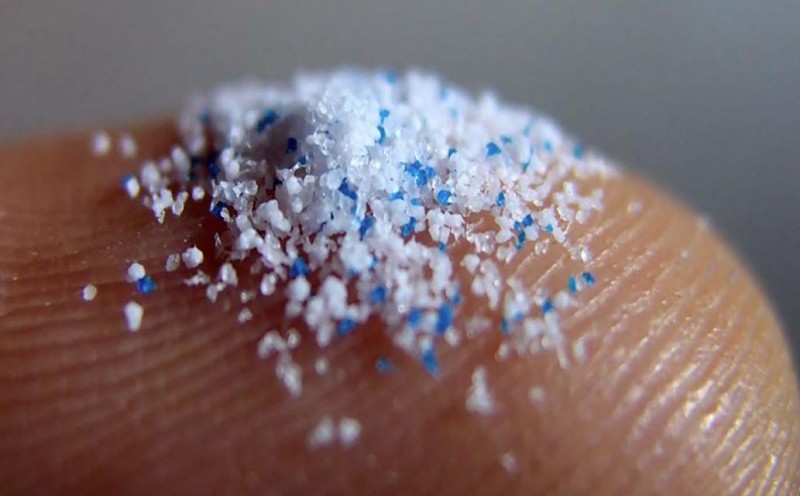
Microplastics have become a significant concern in recent years due to their pervasive presence in the environment and potential impacts on both ecosystems and human health. These tiny plastic particles, measuring less than 5mm in size, are found in various forms and are created through the degradation and fragmentation of larger plastic items. They have been detected in oceans, rivers, soil, and even in the air we breathe. In this article, we will explore the profound impact of microplastics on the environment and human health.
1. Introduction: Understanding Microplastics
Microplastics are particles derived from various plastic materials, including single-use plastics, synthetic fibers, and microbeads. They are either intentionally manufactured at small sizes for specific applications or result from the breakdown of larger plastic items due to weathering, UV radiation, and mechanical forces. Microplastics can persist in the environment for hundreds of years, causing long-term consequences.
2. Sources and Distribution of Microplastics
Microplastics enter the environment through multiple pathways, including:
Plastic waste mismanagement
Fragmentation of larger plastic items
Synthetic fiber shedding from textiles
Disintegration of microbeads in personal care products
Runoff from urban areas and agricultural fields
These sources contribute to the widespread distribution of microplastics in aquatic and terrestrial ecosystems.
3. Environmental Consequences of Microplastic Pollution
The accumulation of microplastics in the environment has far-reaching consequences. They pose risks to wildlife, disrupt ecosystems, and compromise overall environmental health. Here are some key environmental impacts:
Impact on Marine Life
Marine organisms, ranging from small zooplankton to large marine mammals, can ingest microplastics or become entangled in them. This ingestion can lead to internal injuries, malnutrition, reproductive issues, and even death. Additionally, microplastics can transfer pollutants and toxic chemicals to marine organisms, further exacerbating the ecological impact.
Effects on Terrestrial Ecosystems
Microplastics can also affect terrestrial ecosystems. They can accumulate in soil, affecting nutrient absorption and the health of plants and soil organisms. Microplastics can even reach freshwater systems, where they can cause similar adverse effects on aquatic life.
4. Human Health Concerns
The presence of microplastics in the environment raises concerns about potential human health effects. While research is ongoing, there is evidence to suggest the following:
Microplastics in Food and Water
Microplastics have been found in various food items, including seafood, drinking water, and even salt. The ingestion of microplastics through food and water consumption raises concerns about their potential accumulation in human tissues and organs. Further studies are needed to determine the long-term health implications.
Inhalation of Microplastics
Microplastics have been detected in the air, primarily in urban areas and indoor environments. Inhalation of these particles may lead to respiratory issues and other health problems, although the extent of the risks is still being investigated.
5. The Role of Plastics Manufacturing and Consumer Behavior
The production and consumption of plastics play a significant role in the prevalence of microplastic pollution. The excessive use of single-use plastics, inadequate waste management practices, and the lack of recycling infrastructure contribute to the problem. Addressing microplastic pollution requires a collective effort involving manufacturers, policymakers, and consumers.
6. Strategies to Mitigate Microplastic Pollution
To combat the issue of microplastic pollution, several strategies can be implemented:
Recycling and Waste Management
Improving recycling rates and implementing effective waste management systems can help reduce the amount of plastic waste that enters the environment. This includes promoting the use of biodegradable alternatives and developing innovative recycling technologies.
Regulation and Policy Changes
Regulatory measures are essential to control the production, use, and disposal of plastic materials. Bans on single-use plastics, stricter regulations on microbeads, and extended producer responsibility programs can significantly reduce microplastic pollution.
Public Awareness and Education
Raising public awareness about the impact of microplastics is crucial. Educational campaigns can inform individuals about the proper use and disposal of plastics, as well as promote sustainable alternatives and lifestyle changes.
7. Conclusion
Microplastic pollution poses a significant threat to the environment and human health. The widespread distribution and persistence of microplastics in various ecosystems require urgent action. By addressing the sources of microplastics, improving waste management, and promoting sustainable practices, we can mitigate the impact of microplastics and protect our environment and well-being.
Understanding the Importance of Quality Sleep for Overall Health
Everyday Foods That Are Sabotaging Your Weight Loss Goals
The Future of Augmented Reality: Applications and Potential Impact on Society